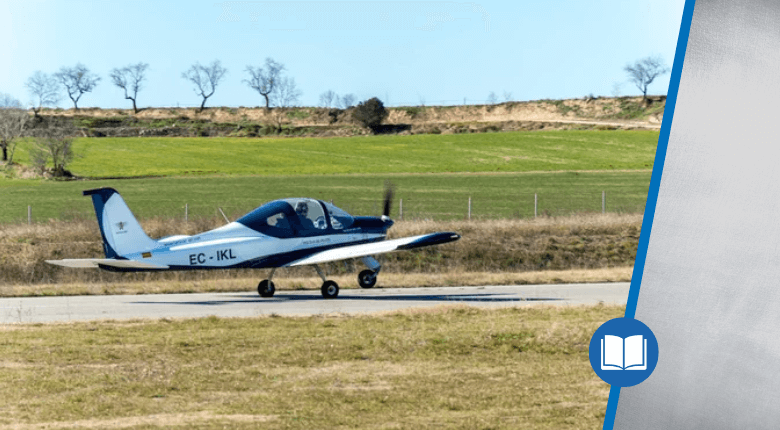How to Become a Pilot: Your Step-by-Step Guide | E3 Aviation
Becoming a pilot is an exciting journey that opens up a world of opportunities, from flying for recreation to pursuing a career in aviation. The first step to becoming a pilot is deciding what type of aircraft you want to fly, as the Federal Aviation Administration (FAA) has different rules for each type. Whether you’re interested in airplanes, helicopters, gliders, or even ultralight vehicles, this guide will walk you through the process of obtaining your pilot’s license and help you understand the various paths available.
Choosing the Right Aircraft for Your Pilot Journey
The type of aircraft you choose to fly will determine the specific licensing requirements you need to meet. The FAA regulates licenses for several categories, including airplanes, gyroplanes, helicopters, gliders, balloons, and airships. If you’re drawn to the freedom of flying without a license, ultralight vehicles might be an option, though they come with their own set of restrictions. For those looking to fly for recreation or as a career, understanding the differences between aircraft types is crucial. For more information on aircraft categories, visit the FAA Pilots page.
Additionally, consider what kind of flying you want to do. Are you interested in recreational flying, or do you aspire to become a commercial pilot? The answer will influence the type of license you pursue, whether it’s a student, recreational, private, or airline transport pilot license. Each license has its own set of eligibility, training, and testing requirements, which we’ll explore in detail.
Understanding Pilot Licenses: From Student to Professional
Once you’ve decided on the type of aircraft, the next step is to understand the different types of pilot licenses available. The FAA offers several levels of certification, each with increasing privileges and requirements. Here’s a breakdown of the most common licenses for aspiring pilots:
- Student Pilot License: This is the starting point for most pilots. It allows you to receive flight training and fly solo under certain conditions. To qualify, you must be at least 16 years old (14 for gliders or balloons), proficient in English, and hold a third-class medical certificate. Learn more about the student pilot certificate on the AOPA Learn to Fly page.
- Recreational Pilot License: Ideal for those who want to fly for fun, this license requires fewer training hours (30 for airplanes) and has limitations, such as flying within 50 nautical miles of your departure airport. You must be at least 17 years old and hold a third-class medical certificate.
- Private Pilot License: This is the most popular license for recreational flyers, allowing you to carry passengers and fly with fewer restrictions. Requirements include being at least 17 years old, holding a third-class medical certificate, and completing at least 40 hours of flight time, including solo and cross-country flights.
For those aiming for a career in aviation, higher certifications like the Commercial Pilot License or Airline Transport Pilot (ATP) License are necessary. These require more extensive training and experience, but they open doors to professional opportunities. Explore the full range of pilot certifications on the FAA Become a Pilot page.
Steps to Obtain Your Pilot License
Now that you understand the different licenses, let’s outline the steps to becoming a licensed pilot:
- Research and Choose a Flight School: Finding the right flight school is crucial. Look for schools that are FAA-certified and have experienced instructors. The EAA Learn to Fly resource can help you find reputable schools in your area.
- Obtain a Student Pilot Certificate: This is your first official step. You’ll need to apply through the FAA’s Integrated Airman Certification and Rating Application (IACRA) system or by submitting FAA form 8710-1 to a Flight Standards District Office (FSDO). For guidance, check out the FAA Safety website.
- Complete Ground School and Flight Training: Ground school covers the theoretical aspects of flying, while flight training provides hands-on experience. Most student pilots need between 60 to 75 hours of flight time to feel confident, even though the minimum requirement is 40 hours for a private pilot license.
- Pass the Written and Practical Tests: The written exam tests your knowledge of aviation rules, while the practical test (checkride) assesses your flying skills. Preparing for these tests is critical, and resources like Pilot Workshop can help you study effectively.
- Receive Your License: Once you pass both tests, you’ll receive your pilot certificate, allowing you to fly independently within the privileges of your license.
Throughout your training, it’s essential to stay informed about aviation safety and best practices. The Aviation Safety Magazine offers valuable insights for new and experienced pilots alike.
Expanding Your Aviation Knowledge and Skills
Becoming a pilot is just the beginning. To grow as an aviator, consider pursuing additional ratings or endorsements, such as instrument rating for flying in various weather conditions or multi-engine rating for larger aircraft. These advanced certifications can enhance your skills and open up new opportunities, whether for personal enjoyment or career advancement.
Additionally, joining aviation communities like the E3 Aviation Association can provide ongoing support, resources, and networking opportunities. Engaging with fellow pilots and aviation enthusiasts can help you stay motivated and informed about the latest developments in the industry.
Conclusion: Take the First Step Toward Your Pilot Dreams
Deciding to become a pilot is a life-changing choice that requires careful planning and dedication. By choosing the right aircraft, understanding the different pilot licenses, and following the steps to obtain your certification, you’ll be well on your way to achieving your aviation goals. Remember, the journey doesn’t end with your license—it’s just the beginning of a lifelong adventure in the skies.
Ready to take the next step? Explore more about flight training and aviation safety today by visiting the E3 Aviation Articles section for in-depth resources and guides.
For more E3 Aviation resources, be sure to visit: https://e3aviationassociation.com

